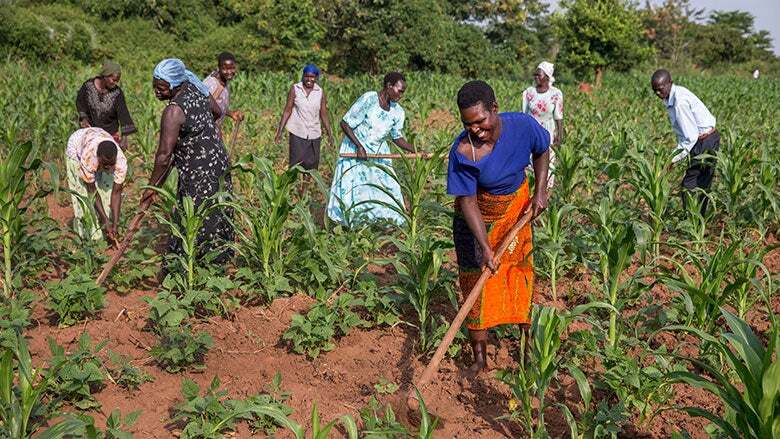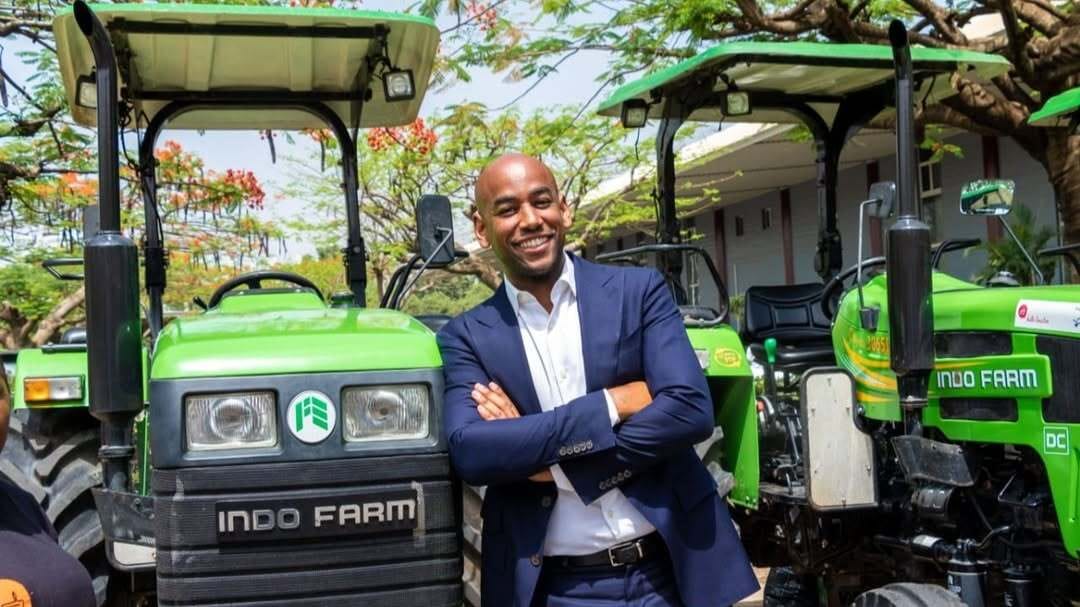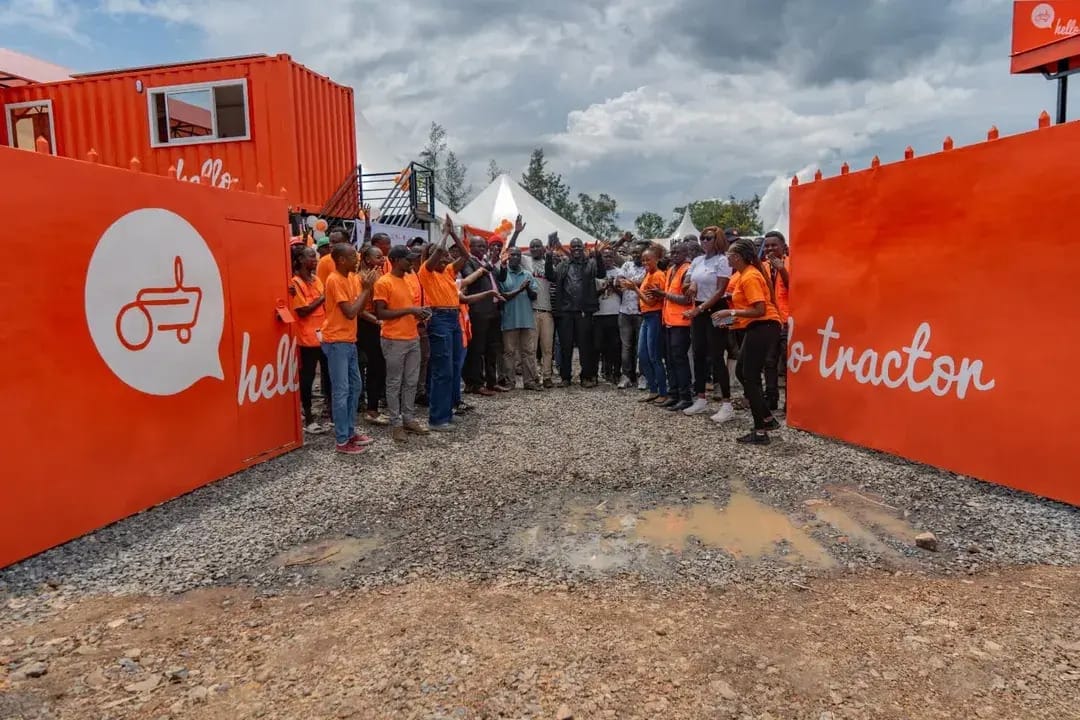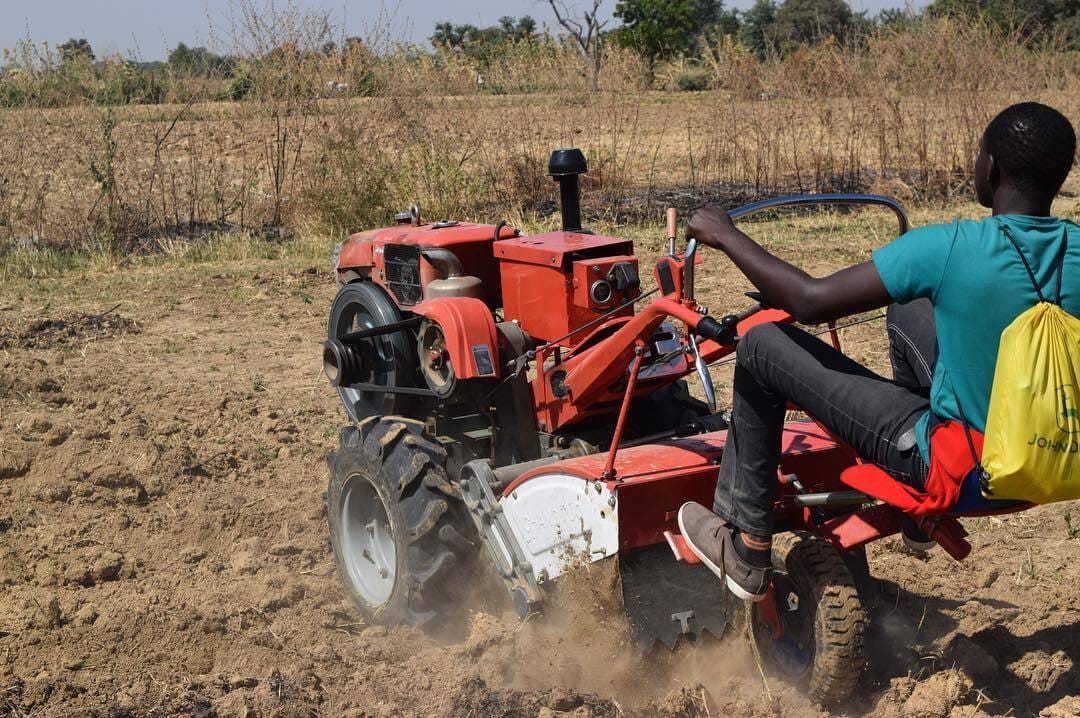Hi, Hannatu here,
Did you know that if you wanted to buy a tractor, you’d need about $50,000.
For smallholder farmers in Kenya (and many other African countries) who earn about $2 per day, that means 68 years of work!
This simple equation explains why 95% of African farmers still plant and harvest by hand.
It could also explain why sub-Saharan Africa, with a quarter of the world's farmable land, produces only 10% of global agricultural output.
Or why the continent spends close to $75 billion annually importing food it could grow itself.
But what if accessing a tractor was as easy as ordering a taxi?
The hand-tool economy
About 33 million smallholder farmers produce 80% of sub-Saharan Africa's food.
And most of them farm the same way their grandparents did: with hoes, machetes, and backbreaking manual labour.

African farmers working with traditional tools. Photo Credit: Jonathan Torgovnik/Reportage by Getty Images
Africa has the lowest mechanization rate in the world.
There are only 13 tractors per 100 square kilometers of arable land. Asia has 200. Europe has over 300.
The reason? Tractors are expensive.
And even if they weren’t, most smallholder farmers don’t need them year-round.
Farming in Africa is seasonal.
After the land is tilled and cleared, the tractors sit idle for months until the next planting cycle.
Maintenance costs money. Fuel is expensive. And finding operators who can drive the equipment is difficult.
For most farmers, all of this makes ownership impractical and unaffordable.
Meanwhile, 65% of Africa's arable land remains underutilized.
Not because farmers don't want to farm it.
Because they can't prepare the land without mechanized help.
But what if farmers could rent tractors when they needed it?
Tractors As A Service
In 2014, Jehiel Oliver saw this disconnect.
The few tractor owners had equipment sitting idle on farms.

Photo of Jehiel Oliver. Photo Credit: Hello Tractor
And farmers who needed tractor services had no way to find them.
Jehiel’s solution was to connect them.
And Hello Tractor was born.
"The idea was to ensure that smallholder farmers get as productive as possible using the agricultural lands. And also that we scale that up to achieve global food security."
The startup works like a ride-hailing app, but for tractors.
Farmers request services. Tractor owners receive bookings. And equipment that would sit idle 80% of the time suddenly generates income year-round.
Unlike Uber though, Hello Tractor operates an agency model that allows African farmers who don’t have smartphones book offline.
The agents are people from farming communities who already have relationships with local farmers.
They handle the technology side, booking tractors on behalf of farmers who prefer dealing with a trusted neighbor.
A farmer tells the booking agent their location, farm size, and when they need service. The agent enters this information into the system. And the nearest available tractor gets the job.
For farmers who can't find a booking agent, Hello Tractor operates hubs they can walk into to request services.

The Kisumu Mechanised Hub in Kenya. Photo Credit: Hello Tractor
The innovation isn't just connecting supply and demand. It's making tractor ownership viable through technology.
Hello Tractor attaches high-sensitivity monitoring devices to tractors. Owners can track their equipment in real-time from an app. Fuel consumption, location, active time, idle time.
This solves a major problem: tractor theft and misuse.
An owner in Nairobi can rent their equipment to a farmer 200 kilometers away with confidence.
If the tractor moves off the agreed farmland or operates outside scheduled hours, they know immediately.
Owning the dream
In 2022, Hello Tractor launched a Pay-as-you-go financing program.
This program, which is operational in Nigeria, Kenya, Uganda, and Rwanda, is changing who can own tractors.
The model is simple: farmers have to put down 5% of the tractor cost. Then collect bookings for 500 hectares of farmland through the Hello Tractor app over a year. The tractor essentially pays for itself through the work it does.
"In some cases, we can waive the 5% down payment," Miliza says.
Traditional banks won't finance tractor purchases for smallholders.
It’s too risky. No collateral. Plus, income is uncertain.
Hello Tractor's data changes that equation.
They can show financiers exactly how much revenue a tractor generates per hectare serviced. The monitoring device proves the equipment is working and earning. The booking history shows consistent demand.
What was once considered too risky becomes a viable investment.
Farmers who could never access equipment financing from banks are now buying tractors.
Many become entrepreneurs, building tractor service businesses that employ operators and serve entire regions.
Scale that matters
After ten years, Hello Tractor operates in 15 African countries. The numbers tell the impact story.
Over 3.5 million acres have been digitized through the platform.
That's farmland that was either underutilized or worked manually before mechanization.
The result? Five million metric tonnes of additional food production unlocked.
In Kenya, where Hello Tractor partnered with the Ministry of Agriculture, 700 tracked tractors now serve 360,000 smallholders through 1,100 booking agents. That opened 690,000 acres to cultivation.
Across Africa, the network spans approximately one million smallholder farmers.
The economics are transforming at the individual level too.
A farmer who spent three weeks manually preparing two acres can now get it done in one day with a tractor.

A smallholder farmer using Hello Tractor. Photo Credit: Hello Tractor
That's two more weeks they can spend on other income-generating activities or tending crops.
Mechanized plowing is deeper and more uniform than hand tools achieve. Seeds germinate better. Water drains properly. Yields increase 40-60% compared to manual farming.
For tractor owners, equipment that was a burden becomes an asset.
A tractor that earned nothing while parked can now generate $2,000-$5,000 monthly in service fees. That covers the loan payment, maintenance, fuel, and operator wages while leaving profit.
The are more fields to plow
Tractors were just the start.
Africa has always known how to make the most out of what sits idle.
The same model can stretch far beyond the field.
Combine harvesters that gather dust for eleven months a year. Irrigation pumps that only a few can afford. Planters, seeders, food processors, all waiting for their turn.
Each one could follow the Hello Tractor blueprint:
Connect owners to users → Add smart monitoring → Enable pay-as-you-go access.
But the real shift isn’t in the machines, it’s in the mindset.
For decades, African farming has been built on ownership.
You either had equipment, or you borrowed human hands.
Hello Tractor proved something new.
You don’t need to own it to use it. Shared access works.
And that changes everything.
Because food security depends on productivity. And productivity depends on mechanization.
And mechanization, in turn, depends on financing models that make sense for smallholder farmers earning just a few dollars a day.
Hello Tractor found one model that does.
As it scales, more land gets tilled.
More crops get harvested. More food stays home. Import bills shrink.
The hand-tool economy doesn’t have to last forever.
It just needed someone to make the numbers add up.
So what’s next?
Which machine takes the baton from the tractor?
The harvester? The irrigation pump? The food processor?
Cheers,

How are you enjoying Ag Safari so far?
Join Ag Safari
Ag Safari is the go-to newsletter for anyone curious about agricultural innovation and potential across Africa. Every week, we deliver tactical insights, news, and founder-led advice straight to your inbox.

